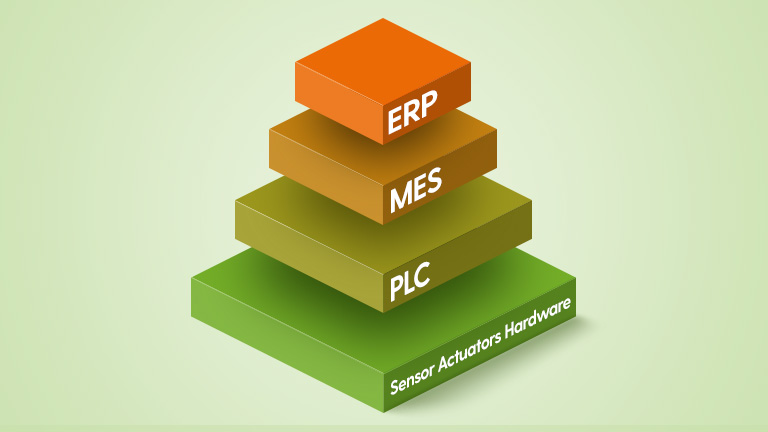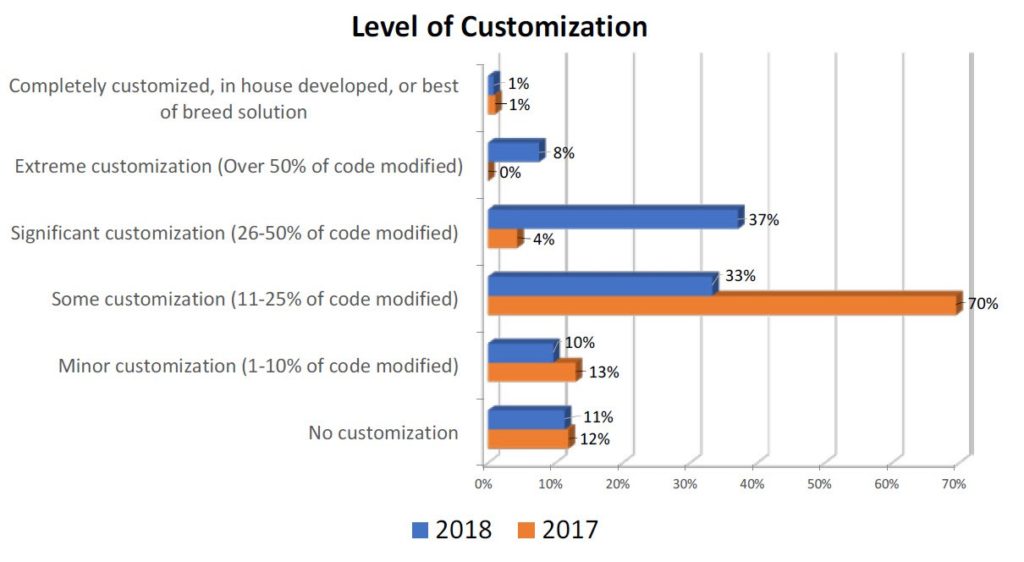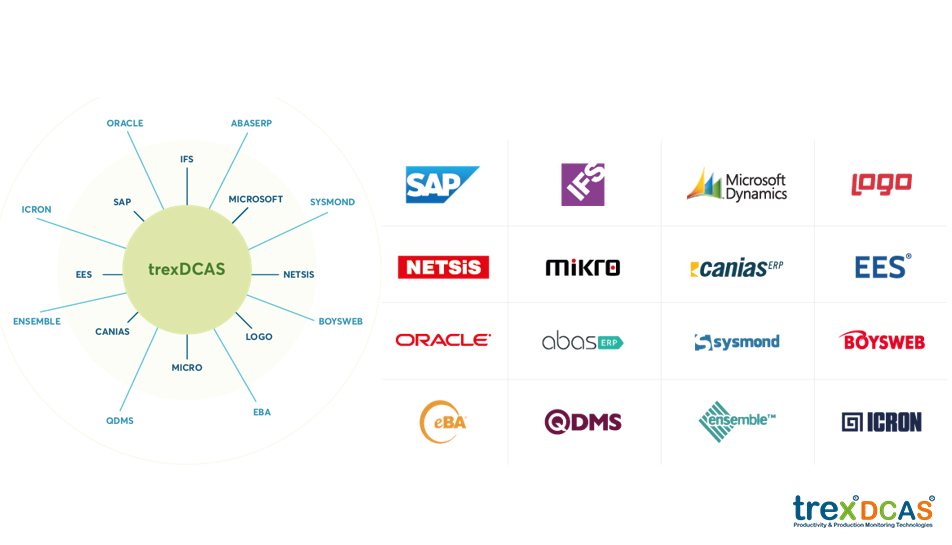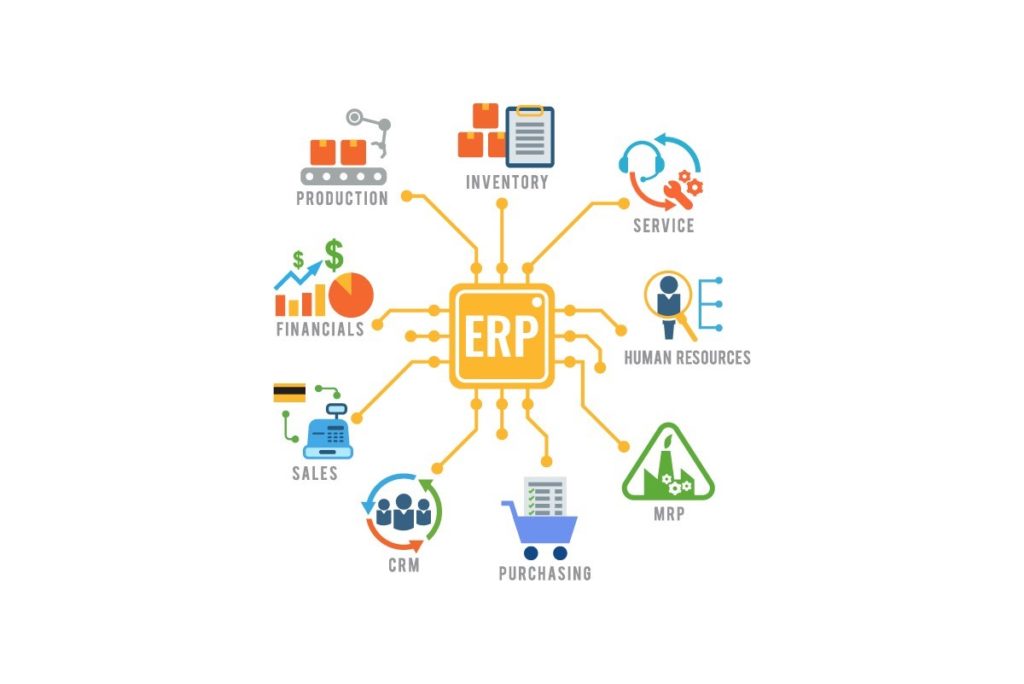
When it comes to integration, ERP integration should not be considered only. MES can be integrated with all 3rd party software such as predictive maintenance software used in planning, quality, work flow management, production field. This integration is also very important for the success of your ERP system in use. As it is known, ERP success rates are around 40%. The reason for such a low is clearly shown below.
Graphic shows that 4 main benefits and realizations that ERP users expect from the ERP systems they use.
1) Reporting and field of view; Think your ERP system is blind and deaf on the shop floor. Information entry needs declaration and manual entries. Moreover, nowadays, while every device, every station, every work center, every machine, every sensor produces data continuously, it is no longer possible to collect this data manually in a primitive way and keep this competitive.
2) Operational efficiency; Since the production facility cannot reach instantly and accurately information on production, quality, efficiency, energy consumption, spent labor and similar information in the production area with the ERP used; As shown in the graph, ERP users’ expectations for an increase in operational efficiency remain very low. A realized MES-ERP integration will raise potential and realization.
3) Businesses expect their ERP Systems to develop and adapt to them with new technologies, but availability is very low. Why?

It takes ERP systems are technically very difficult to adapt and because a long time. ERP systems have to give low success rates due to blindness on shop floor.
How many products are there in the conveyor, what are their sub-operation cycle times actually, what is the theoretical thing in ERP? “Which work order am I working for?” information is transmitted from your ERP system stuck in engineering offices to electronic scales at the end of the conveyor.
When the desired quality-approved quantity is reached by tracking the unit weight on the scale, it automatically writes a barcode and instantly transmits this information to the ERP autonomously from where the information created.
Integration with MES at the ideal Industry 4.0 level should be in the field of data collection, which will save you from every manual operation. The transfer of planning and production information, which is basic, must be with systems such as ERP and ICRON. Integration of systems such as Boysweb and QDMS will be in the category that will add value to your business.

The most basic communication between ERP and MES systems is the transfer of work orders to MES and the transfer of production data to ERP. In addition to these, transferring the necessary details of the stock data for planning and production; If the raw material LOT is to be tracked, more comprehensive communication can be created such as transferring these data, employee informations, and simultaneous execution of maintenance and quality operations between ERP-MES.
Nowadays, ERP and MES systems are very diverse. Both have used different infrastructures and have been developed in different software languages. Therefore, communications that can follow common protocols independently of the ERP or MES used in integration systems are preferred.
In the first integration solutions, these systems were used by sending data to each other’s database or collecting information in a pool, but their use is not preferred for both security and ease of use. Systems containing HTTP protocols are widely used now. Among them, APIs with REST architecture are the most preferred. This architecture allows us to transfer data in a common language independently of the server and user’s own structure.
There is no difference between which ERP system is used for integration services. The important thing is; This ERP system is open to data communication and can be integrated. The information that MES expects and transmits from the upper system is basically certain. It does not matter which ERP is preferred in transferring this information between ERP and MES.

Does an ERP have to be installed? In some businesses, planning and work orders are processed on Excel, what can you say about such systems?
Even if they are operated with such a setup, MES systems can be executed since they are not dependent on a special ERP. In such a use, integration may not be considered, mostly with the approach that we don’t have an ERP program already. However, instead of transferring data to another program, it can be approached with an integration idea where data will be transferred to excel tables. The data you get from the MES system with integration can be used as desired.,
Is there a danger that integration into an ERP system owned today loses its function when changes are made to the ERP system in the future?
We have encountered this kind of ERP system change many times. Since our integration system is independent of the ERP used, it does not lose its functionality. However, if an integration is applied only on that institution and its system -such as transferring data to each other’s databases- these integrations are renewed and made compatible with the REST API architecture.

Considering a basic integration project where two systems communicate; We can conclude that at least four different applications, two different basic applications and two different integration applications, should communicate between them.
In order for integrated systems to work together successfully; It requires not only integration applications but also four different applications to be compatible with each other at all times. In this case, a change made on one of the prime systems may disrupt data exchange between systems in current versions even if there is no change in integration applications. As with any software application, this problem can be managed by performing adequate testing.
Assuming that there are two different systems and two different software manufacturers; Since it is not possible to know exactly whether the functions of software developed by different manufacturers have changed in the pre-release test processes, it is not possible to control it precisely. Therefore, a test environment should be created by taking a copy of the live system and all version changes should be uploaded to the copy system first. After the necessary controls are made, it should be switched to the live system.
As with any project, the size of the project determines the cost. After the size is determined, an effort period is calculated by analyzing it. If the chosen MES partner has field experience with different ERP systems well enough from different sectors, they can perform the integration process more successfully.
As for trexDCAS, there is a ready-made system independent integration module for ERP integration. This significantly reduces the workload during the integration period. It is constantly developed according to the needs of our business partners and these improvements are offered to all our licensed customers. For the developments not included in the module, the size is determined and an effort time is calculated as stated at the beginning.
In the average man / day periods; integration is not the ultimate goal. The goal is to obtain the benefits of using successful MES with successful ERP and to ensure its continuity. Integration is one of the stages on this road. When I take as basis the draft framework created by our project consultancy teams with their inferences and meticulous studies; A standard project to collect data from 50 machines is commissioned in 4-5 months with 30-35 man / day effort. This includes ERP integration.